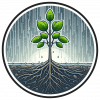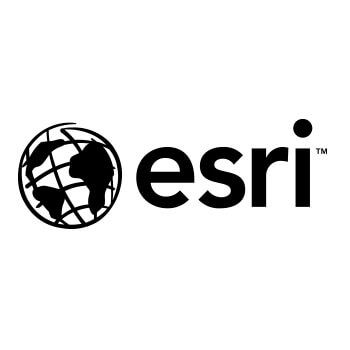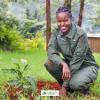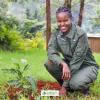GIS, or Geographic Information Systems, play a crucial role in nature conservation. Every day, mapping and spatial analysis are aiding conservation decisions, protected areas designation, habitat management on reserves and monitoring of wildlife populations, to name but a few examples. Want to learn more about how remote sensing is used in conservation? Check out the first two episodes of this season of Tech Tutors, where our Tutors answer the questions How do I use open source remote sensing data to monitor fishing? and How do I access and visualise open source remote sensing data in Google Earth Engine?
You can also check out our Virtual Meetup Archive for a range of panels that overlap with Remote Sensing & GIS topics.
- @Durgananda
- | He
- 0 Resources
- 0 Discussions
- 20 Groups
- 0 Resources
- 0 Discussions
- 4 Groups
Technical Specialist at FFI: loves data management, maps, remote sensing & GIS for conservation

- 0 Resources
- 2 Discussions
- 9 Groups
An Environmental sciences and Management graduate from SUA, passionate and eager to drive change to the Environment, making World a better place for present and future generations.
- 0 Resources
- 3 Discussions
- 10 Groups
- @thomasmutonhori
- | TM
Ecologist
- 0 Resources
- 0 Discussions
- 4 Groups
- 0 Resources
- 4 Discussions
- 4 Groups
- @capreolus
- | he/him
Capreolus e.U.
wildlife biologist with capreolus.at





- 1 Resources
- 66 Discussions
- 16 Groups
- @CathyNj
- | She
Catherine Njore is a seasoned Cartographer with over 17yrs experience and specializing in children cartography. She recently designed a Cartography: Fun with Maps Program(CFMP); a program that assists children to learn how to draw, read and use maps effectively.
- 1 Resources
- 8 Discussions
- 6 Groups
- @Naomi25
- | she/her
Naomi Mkama Njarabi, a Tanzanian conservation ecologist and nature enthusiast, is currently pursuing a Master of Science in Biodiversity Conservation at the University of Dar es Salaam, following her completion of a Bachelor's degree in Wildlife Management
- 0 Resources
- 0 Discussions
- 4 Groups
- 0 Resources
- 0 Discussions
- 5 Groups
Spanish veterinarian interesting wildlife conservation
- 0 Resources
- 0 Discussions
- 9 Groups
- @MoniqueWSheSS
- | She
Wildlife enthusiast and Research assistant
- 0 Resources
- 0 Discussions
- 2 Groups
The incumbent will develop models and metrics that can be used to shape conservation policy using multiple data sources including camera traps, movement data and citizen science concerning the diversity and...
23 April 2024
Careers
The Smithsonian National Zoo & Conservation Biology Institute is seeking a Program Manager to help coordinate multiple organizations in an effort to integrate movement data & camera trap data with global...
22 April 2024
The Smithsonian National Zoo & Conservation Biology Institute is seeking a Postdoctoral Research Fellow to help us integrate movement data & camera trap data with global conservation policy.
22 April 2024
Watch our interview with pioneering young Tanzanian vulture researcher Vainess Laizer! Her research investigating the breeding success of white-backed vultures in the western corridor of the Serengeti ecosystem using...
16 April 2024
ZSL is looking for an enthusiastic research scientist to join the multidisciplinary team and help deliver a project in Wales to better understand the ecology of tope sharks (Galeus galeus) in North Cardigan Bay and the...
9 April 2024
WWF is looking for consultant(s) with expertise in spatial data mapping and analysis.
19 March 2024
The Smithsonian’s National Zoo and Conservation Biology Institute (SNZCBI) is seeking two postdoctoral fellows to engage more directly with identifying conservation metrics for vertebrate communities and populations.
14 March 2024
The Max Planck Institute of Animal Behavior at its sites in Constance and Radolfzell offers an international, interdisciplinary, and collaborative environment that opens up unique research opportunities. The goal of our...
13 March 2024
Texas A&M is seeking applicants for a fully funded Ph.D. assistantship to begin a long-term study on collared peccary (also known as javelina) ecology in southern Texas.
13 March 2024
Emerging trends for Nature-Based Solutions project assessments
8 March 2024
Join us to help prevent biodiversity loss! Understory is hiring a postdoc to lead R&D Development on generalizing Computer Vision models for vegetation identification across space/time/phenotypes.
29 February 2024
Is there really a sustainability data deficiency? We don’t think so.
29 February 2024
May 2024
July 2024
April 2024
March 2024
event
event
| Description | Activity | Replies | Groups | Updated |
|---|---|---|---|---|
| Hello Everyone,I have a question on how to use landcover data. I've data collected for five years and I want to know at what landcover type... |
|
Remote Sensing & GIS | 2 days 4 hours ago | |
| Hi folks!@Chelsea_Smith from Fauna & Flora joined last month's variety hour to share more about Fauna & Flora's work with... |
|
Remote Sensing & GIS, Data management and processing tools, Protected Area Management Tools | 1 week 1 day ago | |
| Calling practitioners working in connectivity... we're doing some thinking around modelling functional connectivity, and the data that... |
|
Remote Sensing & GIS | 2 weeks ago | |
| Thank you Carly, I will definitely take a look. |
|
Acoustics, Biologging, Climate Change, Conservation Tech Training and Education, Data management and processing tools, Remote Sensing & GIS, Software and Mobile Apps | 1 month ago | |
| We will be conducting in-person demos of our cutting-edge drone technology in the US this year! 🇺🇸 If you're interested in experiencing... |
|
Biologging, Drones, Remote Sensing & GIS, Software and Mobile Apps | 2 months 1 week ago | |
| Am working on similar AI challenge at the moment. Hoping to translate my workflow to wolves in future if needed. We all are little overstretched but it there is no pressing... |
|
Camera Traps, AI for Conservation, Build Your Own Data Logger Community, Data management and processing tools, Marine Conservation, Protected Area Management Tools, Remote Sensing & GIS | 2 months 4 weeks ago | |
| Real nice video. I'll have another look in the weekend in detail. |
+10
|
Acoustics, Community Base, Protected Area Management Tools, Remote Sensing & GIS, Sensors | 2 months 4 weeks ago | |
| Hi!I would take a look at Although developed for camera trap imagery, it is by no means restricted to such.Cheers,Lars |
|
Camera Traps, Community Base, Data management and processing tools, Drones, Emerging Tech, Remote Sensing & GIS, Software and Mobile Apps | 3 months ago | |
| Thank you for the links. As a trainer in GIS I have gone through them and they are very helpful for a beginner in QGIS. |
|
Remote Sensing & GIS | 3 months ago | |
| Thank you for this! Will take a look. |
|
Climate Change, Conservation Tech Training and Education, East Africa Community, Remote Sensing & GIS | 3 months 1 week ago | |
| Appreciate that Lars! |
+20
|
Biologging, Remote Sensing & GIS | 3 months 3 weeks ago | |
| Hi Eva, Me and my colleagues run a small NGO based on Yogyakarta in Indonesia, although our projects are spread around the country. One of our active project is working with... |
|
Community Base, Biologging, Citizen Science, Climate Change, Human-Wildlife Conflict, Marine Conservation, Remote Sensing & GIS | 4 months ago |
Ecologist Postdoctoral Research Fellow
23 April 2024 4:32pm
Using Raster data?
23 April 2024 1:17pm
Program Manager: Integrating movement and camera trap data with international conservation policy
22 April 2024 10:16pm
Postdoc: Biologging & Camera Trap Data Integration
22 April 2024 10:10pm
Fauna & Flora: Bridging geospatial data and people together for enhanced conservation management
17 April 2024 11:31am
Starting a Conservation Technology Career with Vainess Laizer
 Esther Githinji
Esther Githinji
16 April 2024 1:34pm
Modelling functional connectivity?
11 April 2024 11:55am
Applied hierarchical modelling (AHM) for species distribution and abundance
9 April 2024 7:22pm
Post Doctoral Research Assistant at ZSL
9 April 2024 7:03pm
ibm-nasa-geospatial (IBM NASA Geospatial)
28 March 2024 9:22am
NASA and IBM have teamed up to create an AI Foundation Model for Earth Observations, using large-scale satellite and remote sensing data, including the Harmonized Landsat and Sentinel-2 (HLS) data.
Catch up with The Variety Hour: March 2024
21 March 2024 7:39pm
30 March 2024 3:08pm
31 March 2024 12:43pm
Leveraging Actuarial Skills for Conservation Impact
15 March 2024 12:31pm
19 March 2024 6:35pm
Thank you for your response Akiba. I will have a look. 👏🏻
19 March 2024 7:52pm
I would look into the TNFD (Taskforce on Nature-Related Disclosures), Finance for Biodiversity, Accounting for Nature, etc. which are all focusing on how to incorporate nature risk into corporate reporting and sustainability frameworks!
20 March 2024 3:48pm
Thank you Carly, I will definitely take a look.
Consultants - Mapping EU’s Marine Protected Areas and analyzing their ecological coherence
19 March 2024 9:39am
2 Postdoctoral Conservation Ecologist Positions at Smithsonian’s National Zoo and Conservation Biology Institute (SNZCBI)
 Smithsonian Institution
Smithsonian Institution
14 March 2024 7:18pm
International Day of Forests: "New Technological Innovations are Needed to Halt Deforestation and Forest Degradation" Panel
14 March 2024 12:16pm
PhD Opening: Revealing the Dynamics of Soaring Environments Through GPS and Drones
13 March 2024 2:11pm
Ph.D. Assistantship: Collared Peccary Population and Spatial Ecology in Southern Texas
13 March 2024 1:51pm
Navigating corporate due diligence in the Voluntary Carbon Market
8 March 2024 4:36pm
26 March 2024 2:11pm
27 March 2024 10:56am
29 March 2024 9:13am
Machine Learning Postdoc Position, Understory
29 February 2024 11:56pm
Data data everywhere, but not a byte to use!
29 February 2024 7:13am
Engineer in novel technologies and approaches for biodiversity monitoring
26 February 2024 6:12pm
Scaling biodiversity scoring for supply chains aligned with TNFD
20 February 2024 9:44am
Wildlife Drones will be hosting in-person demos in the U.S.
12 February 2024 3:32am
Post-doc possition - Field spanning movement ecology, ecology of fear, bio-logging science, behavioral ecology, and ecological statistics
10 February 2024 7:20am
Bio-Logging Science Symposium
9 February 2024 3:59pm
Conservation Technology Intern - The Wildlife Restoration Foundation
8 February 2024 7:52pm
Account Manager - Conservation & Nonprofit
 esri
esri
8 February 2024 4:30pm
Jupyter Notebook: Aquatic Computer Vision
25 January 2024 5:50am
26 January 2024 1:46pm
This is quite interesting. Would love to see if we could improve this code using custom models and alternative ways of processing the video stream.
27 January 2024 4:07am
This definitely seems like the community to do it. I was looking at the thread about wolf detection and it seems like people here are no strangers to image classification. A little overwhelming to be quite honest 😂
While it would be incredible to have a powerful model that was capable of auto-classifying everything right away and storing all the detected creatures & correlated sensor data straight into a database - I wonder if in remote cases where power (and therefore cpu bandwidth), data storage, and network connectivity is at a premium if it would be more valuable to just be able to highlight moments of interest for lab analysis later? OR if you do you have cellular connection, you could download just those moments of interest and not hours and hours of footage?
27 January 2024 6:11am
Am working on similar AI challenge at the moment. Hoping to translate my workflow to wolves in future if needed.
We all are little overstretched but it there is no pressing deadlines, it should be possible to explore building efficient model for object detection and looking at suitable hardware for running these model on the edge.
Power managment/Recharging System and Communication System
2 January 2024 4:06pm
26 January 2024 8:49am
"Seychelles and South Africa did not allow Starlink to operate"
This is not good, has implications for anti-poaching measures.
26 January 2024 9:03am
Power usage for microcontrollers with solar is much more manageable. For Raspberry Pi's and higher it gets expensive and big.
I'm quite impressed by the specs from the Goal Zero Yeti devices. This can have high capacity and be charged with Solar. Not small though. And the price is not in proportion to the Pi's.
So this 200x model for example, would be close to 16 days running the audio recorder. Let's say 10. without solar. Add solar? Depends on the size of the panels I guess. Power usage for mobile networking? Depends on how much you transmit.
Probably some well documented experiments would be really nice for people here. Sounds like something nice for the next set of grants :)
26 January 2024 2:11pm
Real nice video. I'll have another look in the weekend in detail.


















































21 March 2024 9:48pm